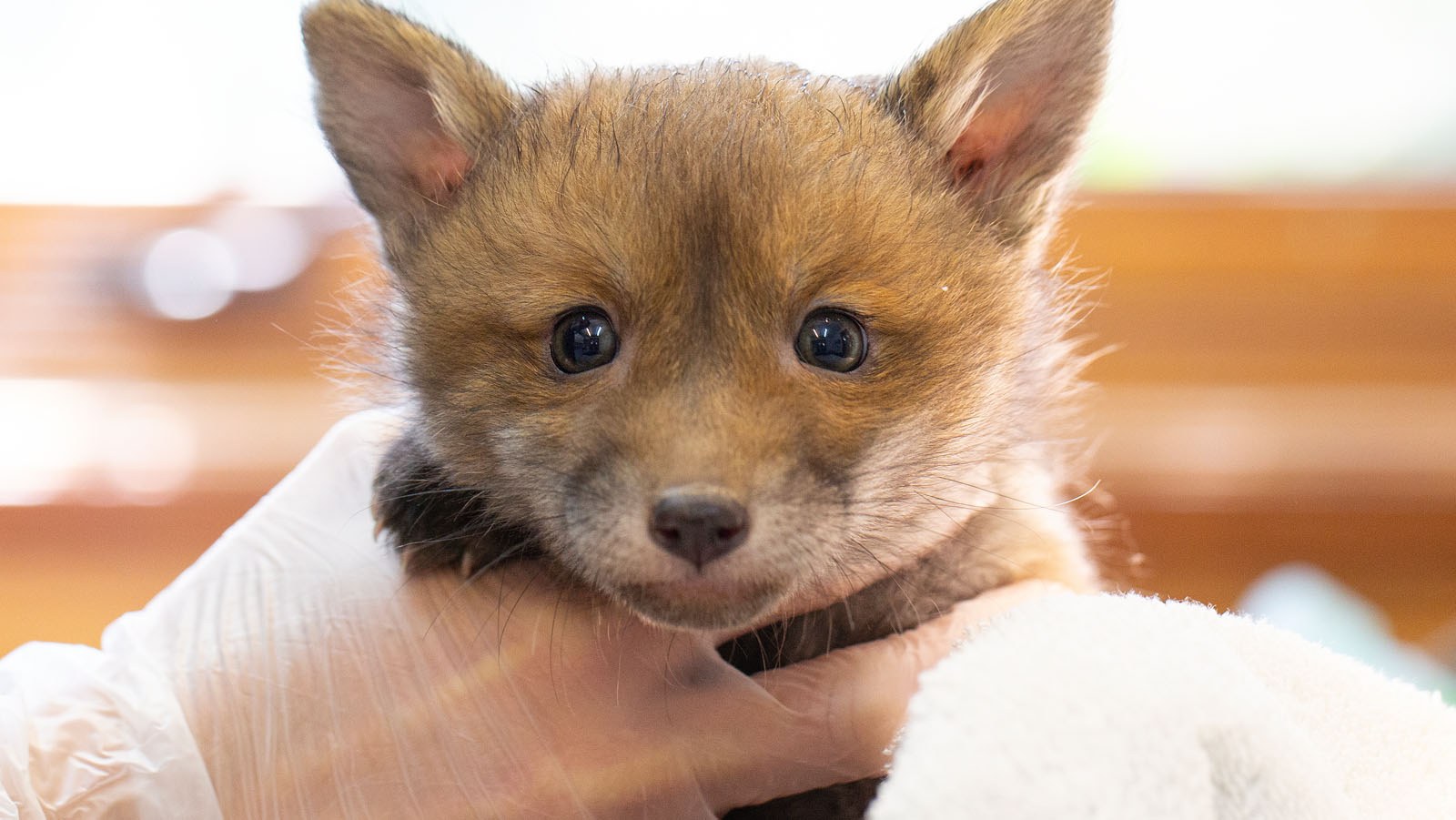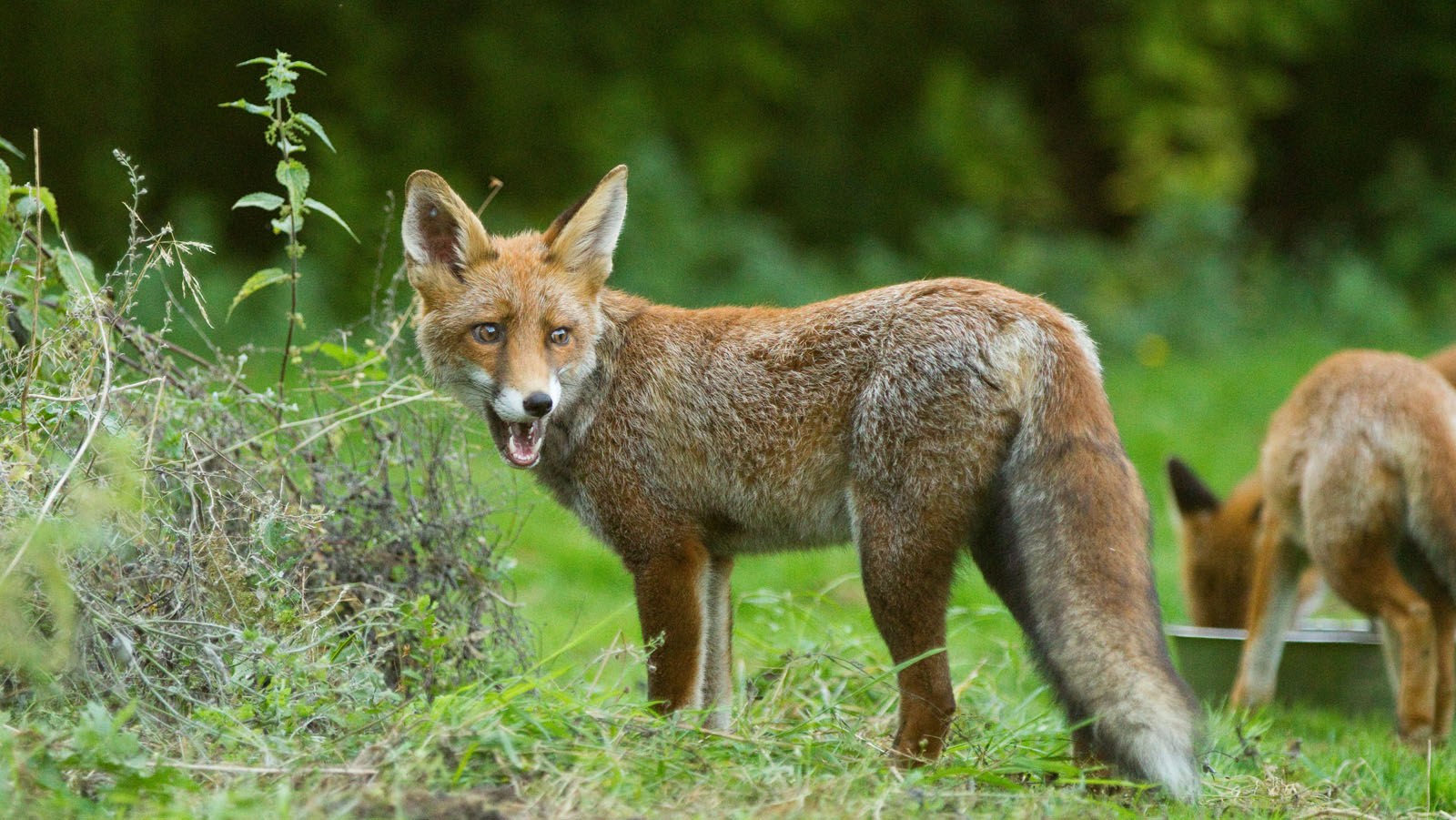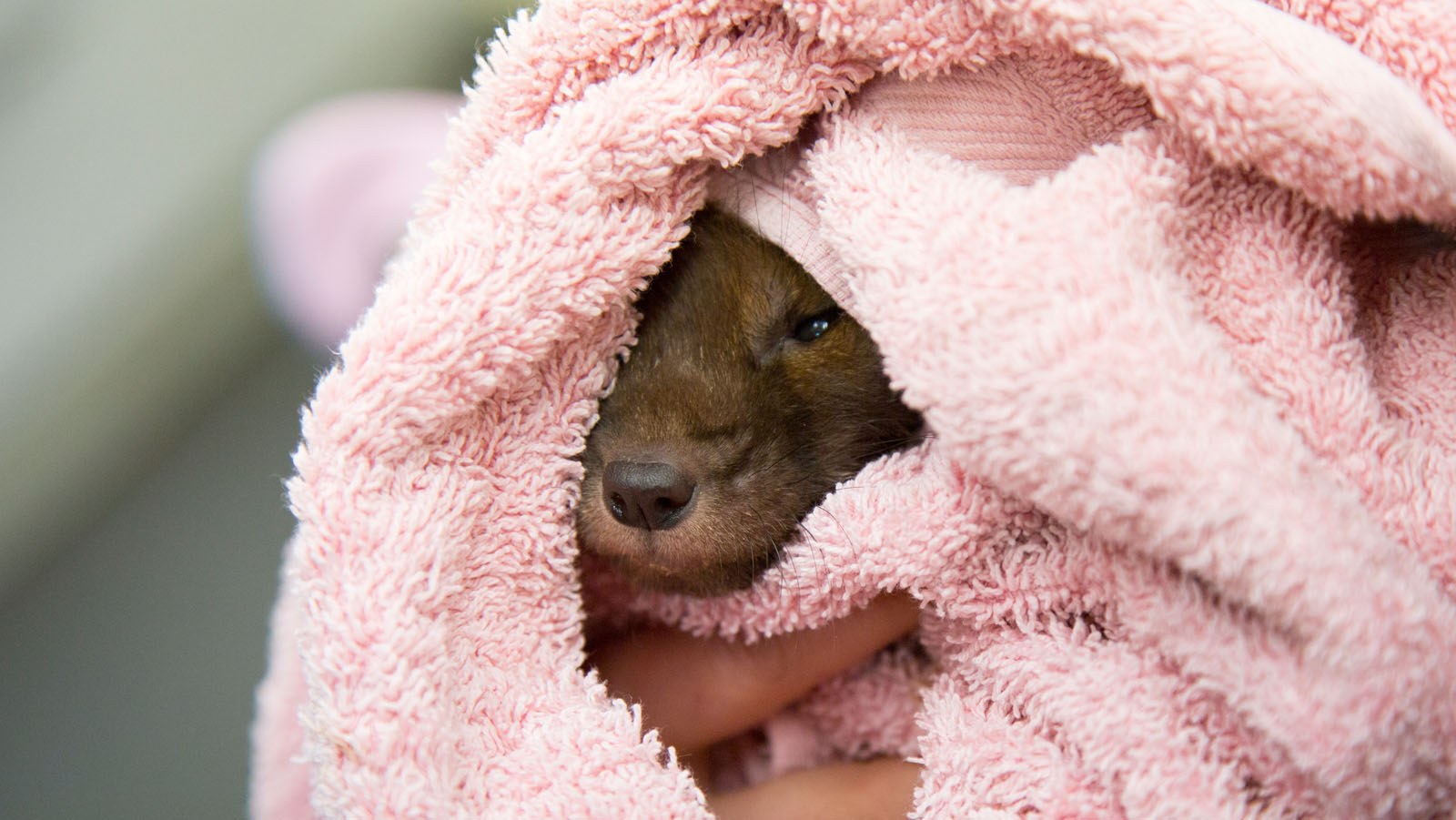Foxes
Check what the injury is. A limping fox, or a fox walking on just three legs, will often be displaying the first signs of mange. They will still be mobile, and will elude capture. Unfortunately, mobile foxes are impossible to catch. We might suggest setting up a feeding pattern and observing it for a week. Food will help the fox to survive while the injury heals. Once they are in a routine, then it’s possible they can be trapped. If it is mange (see following section) then homeopathic food supplement can be added to the food for a few weeks.
Fox cubs
The fundamentals of what you should and shouldn’t do when finding a fox cub.

More about fox cubs
Fox cubs are born between January and March. For the first couple of weeks, their eyes are closed and they remain in the earth, with both parents going for food and returning to feed them. Often, the mother will move the cubs from the birthing earth to a new earth, to avoid predators smelling where the cubs are. She will carry each cub in her mouth and move them, one by one. If she gets disturbed, she may drop a cub, but she will generally come back for it, so it should be left well alone until there is no doubt that she isn’t going to return.
The main carer is Mum and, once the cubs are slightly bigger, she will leave them alone to go and search for food, and may not return to the earth for a few hours at a time. Once the cubs are slightly bigger and their eyes start to open, they will become more vocal and more adventurous, and may start to emerge from the earth, calling for Mum.
This is the point at which most fox cubs are found by people, and this is the time we need to be most careful with our advice. Too many perfectly healthy fox cubs are picked up and brought to us, unnecessarily, when they are just starting to explore and are getting hungry (which may make them whimper a little). It’s only if they start to appear dehydrated or they are in mortal danger (by the side of a road, by a river, soaking wet in the rain, etc.) that we should intervene. Even then, please, speak to us, first, before you do anything. We will most likely ask you for a photo, so we can assess the age of the cub. We can then attend the scene, review the situation, and make the critical decision as to whether to separate that cub from the probable return of its mother.
If we remove cubs from a mother who is still healthy, then we risk the mother getting mastitis, which is a painful and sometimes fatal condition. All possible steps must be taken to avoid separating cubs from their mother.
Fox cubs are, usually, fully weaned by June, and over the summer and into September they will gradually separate from their parents and siblings and establish their own territory.
Here are some of the most common calls we get about fox cubs:
Firstly – don’t touch it! It’s probably a fox cub – fox cubs do not look at all like foxes when they are very young. When fox cubs are born, they are a dark chocolate brown and look very like small kittens or puppies. If in doubt, call us and send us a photo. Observe the youngster from the house for a while, as the vixen might have been disturbed while moving her cubs to a new den. If she does not appear after several hours and the cub is getting distressed, please, call us back. If the cub is not distressed but the weather is cold, provide a cardboard box for shelter, but do not handle the cub (if you must handle the cub, do so wearing gloves that you’ve, first, rubbed in soil, to avoid leaving any human scent on the youngster).
Repellents and deterrents
Ethical deterrents that you can carry out yourself
- Throw a bucket of water over the fox every time it comes in the garden.
- Fill a tin can with stones and rattle it.
- Bang saucepan lids/dustbin lids etc. together.
- Foxes do not like the scent of male human urine…
Essentially, make the fox feel unwelcome every time it ventures too close. It will not be an overnight solution, but, over time, it will get the message.

